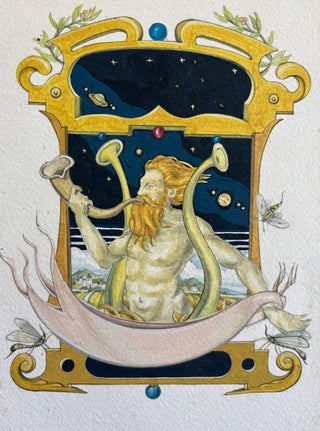In a world that moves faster every day, art invites us to pause. A painting isn’t just color and composition; it’s a visual language, a moment of emotion translated into form. Yet many people walk past artwork without ever really seeing it. They admire it briefly, maybe comment on the color or the subject, and move on. But the real magic of art begins when you take the time to connect.
Whether you’re standing in front of one of my paintings or a piece by another artist, here’s how you can deepen your connection and truly experience what the work has to offer.
1. Slow Down and Look Longer
The first step to connecting with a painting is simple: give it time.
In a gallery or online, most people spend only a few seconds glancing at each piece before moving on. But if you stop and stay with a painting for even a few minutes, new details start to emerge: the texture of a brushstroke, the contrast between colors, the rhythm of the composition.
Let your eyes wander slowly. Notice where they’re drawn first, and how they move across the canvas. Often, the artist has intentionally guided your gaze, using light, line, and contrast to create a path through the work. When you slow down, you can feel the energy and intention behind each stroke.
2. Notice How It Makes You Feel
Art is emotional before it’s intellectual.
Before you try to “understand” a painting, ask yourself how it makes you feel. Does it calm you, excite you, make you nostalgic, or uneasy? There’s no wrong answer - your emotional response is part of the dialogue between you and the artwork.
As an artist, I often begin with a feeling rather than a subject. The shapes and colors evolve from that inner emotion. When a viewer senses something similar, whether or not they can put it into words, it means the painting has done its job.
3. Look Beyond the Subject Matter
A painting of a tree isn’t just about a tree. It might be about stillness, strength, or the passage of time. The visible image is just one layer of meaning.
When you look beyond the literal subject, you start to sense the artist’s deeper intention. Maybe it’s in the way the light hits a surface, or how the colors shift from warm to cool. These subtleties often carry the emotional or spiritual message of the piece - something you can feel more than explain.
If you ever find yourself asking, “What does this mean?” try instead, “What is this saying to me?”
Citrus Enchantress - Print, Paul Reeb
4. Observe the Details - and the Silence
Every painting has a voice, but it also has quiet spaces.
In my own work, I pay close attention to what I choose not to paint. Empty spaces, softened edges, or subtle transitions can say as much as bold strokes or bright colors. They give your eye a place to rest and invite your imagination to participate.
Notice these quiet moments in a painting. They often hold the atmosphere or emotion that lingers after you look away.
5. Learn About the Artist’s Perspective
Once you’ve taken in the painting on your own terms, it can be enlightening to learn about the artist. What inspired them? What techniques or materials did they use? What era or place did they come from?
Understanding an artist’s story doesn’t replace your own interpretation, it adds another layer. When you know what moved the artist to create, it often deepens your appreciation of the work and your connection to it.
6. Let the Painting Speak to You Over Time
Connection with art doesn’t always happen instantly. Sometimes a painting grows on you. You may find yourself thinking about it days later, or returning to it and seeing something new.
Art is alive in that way - it changes as you change. The more experiences you bring to it, the more meaning it reveals. A painting you love today might speak to you differently years from now, yet still feel like an old friend.
A Final Thought
Connecting with a painting is really about slowing down and opening up to the work, to the artist, and to yourself. When you allow art to move you, it becomes more than decoration. It becomes a shared experience, a conversation across time and emotion.
So next time you stand before a painting, take a breath. Let it draw you in. You may be surprised by what it reveals - not only about the artist, but about your own way of seeing.






